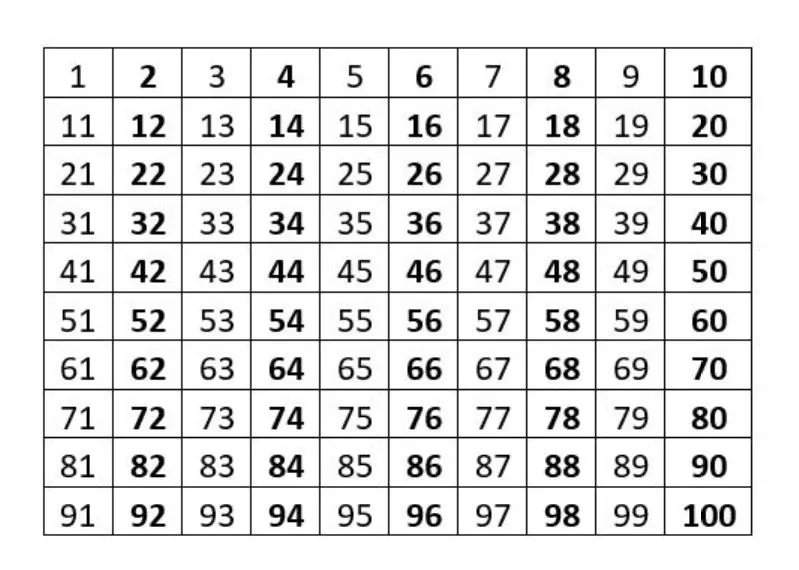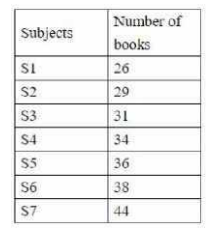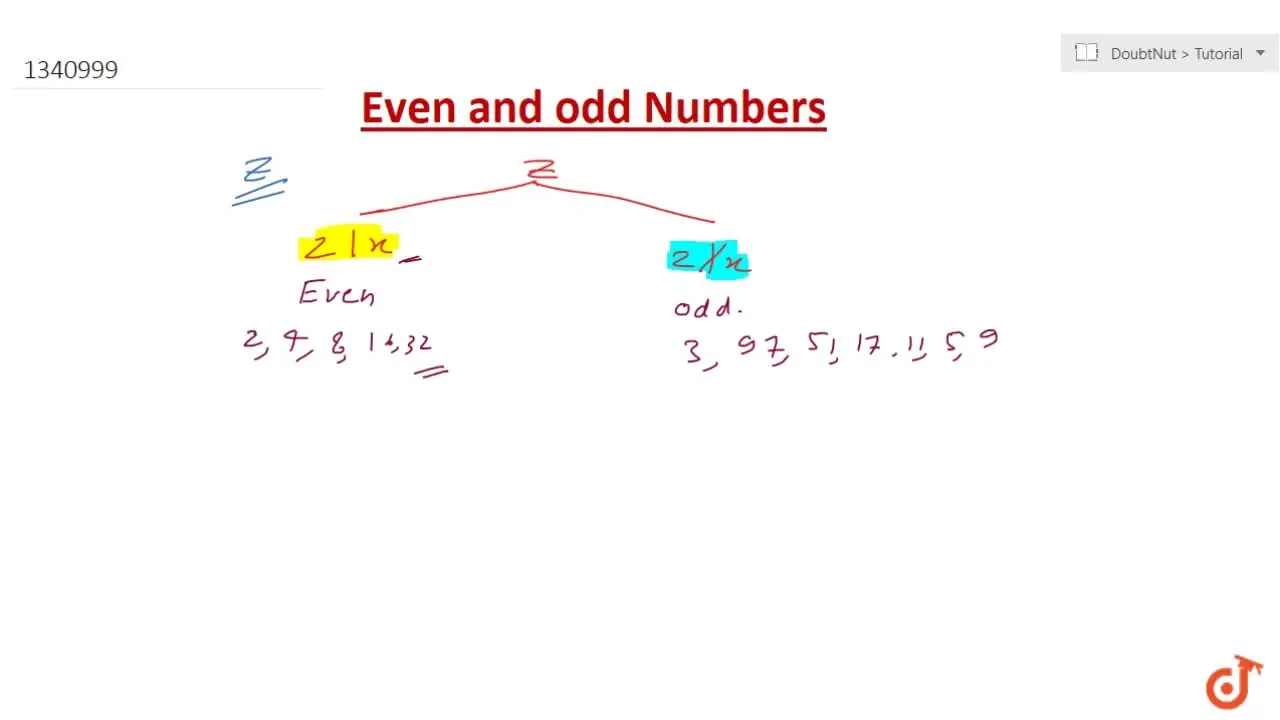Odd and Even Numbers
Odd and Even Numbers
Life without numbers is unimaginable. How do you count different things or objects? Well, this is done by counting from 1 and so on. In other words, you count as 1, 2, 3, 4, etc. Suppose your teacher does not give you any homework, then how you would count? Well, in this case, you will say zero. Here, in this lesson, you would be able to learn even numbers and odd numbers. We will also study prime and composite numbers.
Natural Numbers
Before we discuss even and odd numbers, it is very important to know about natural numbers. Well, these numbers are 1, 2, 3, 4, 5, and so on. You would find it interesting that if 1 is subtracted from any natural number, the result that we get is its predecessor or previous number. On the other hand, we a get a successor or next number if we add 1 to any natural numbers. For example, the predecessor of 6 is 6- 1 = 5 and the successor of 7 is 7 + 1 = 8. So, you have got the right idea about natural numbers, predecessors and successors.
Whole Numbers
To understand whole numbers, we will take an example to get a clear idea about it. Suppose you have 7 marbles and you distribute all to your friends. How many marbles do you have? Well, it is zero which is denoted by the symbol ‘0’. So, here you need to pay attention that if 0 is added to the group of natural numbers, we get whole numbers. For example, when we say the predecessor of 1, it is 0. This is because 1 – 1 = 0. Here, 1 is not a natural number, and it has the predecessor, which is a whole number.

Properties of Zero
- If any number is multiplied by 0, it provides the answer 0.
- When 0 is subtracted from any number, it always remains the same.
- The smallest whole number is 0.
- The result does not change if 0 is added to any number.
There are two types of whole numbers, and they are even numbers and odd numbers.
What are even numbers?
Even numbers are numbers that are divisible by 2. When you divide even numbers, you will find that the remainder is 0. The digits 2, 4, 6,8, 10, 12, and so on are even numbers. Coming to the sets of even numbers, they are expressed as:
Even = {2n: n ∈ integer (number)}.
Now, can you tell whether 0 is an even number? Well, the answer is yes as it is a multiple of 2. Here, it can be expressed as
{2n = 2 x 0}
Odd Numbers
The numbers which are not divisible by 2 are called an odd number. When you divide odd numbers, you will find that the remainder is 1. The numbers 1, 3, 5, 7, 9, etc. are all odd numbers. When it to come to the sets of odd numbers, they are expressed as:
Odd = 2n + 1: n ∈ integer (number)}.
What are the steps to check for odd and even numbers?
- First, you need to divide the number by 2.
- Next, you have to check the remainder.
- If you find that the remainder is 0, then it is an even number, and it would be an odd number in case a remainder is an odd number.

Just think of two odd numbers and then subtract it. What do you get? Do you get an even number? Well, now multiply the two odd numbers and look at the result. Do you find an odd number? You can try to repeat this with any other odd numbers where you would be able to get the same result. So, you can understand that the product of any two odds is always an odd number. On the other hand, if any two numbers are subtracted, the result is an even number.
Now, look at the table below where even numbers are highlighted in bold. The rest are the odd numbers.

Related Videos:
- Real Numbers
- Prime and Composite Numbers
- Rational Number with examples
- Irrational Number with examples
- Co-Prime Numbers and Twine Prime Numbers
Adding Even and Odd Numbers
even + even = even
for example: 4 + 2 = 6
even + odd = odd
4 + 3 = 7
odd + odd = even
5 + 3 = 8
Subtracting Even and Odd Numbers
even - even = even
4 - 2 = 2
even - odd = odd
4 - 3 = 1
odd - odd = even
5 - 3 = 2
Multiplying Even and Odd Numbers
even x even = even
4 x 2 = 8
even x odd = even
4 x 3 = 12
odd x odd = odd
5 x 3 = 15
So, you have got a clear idea about numbers. Now, we will work on some examples to make it more clear to you. Look at the following:
Question 1: Whether 134256791 is an even number?
Answer: When we look at the unit digit of the given numbers, it is 1. So, this is an odd number. You would find that it will leave a remainder of 1 when it is divided by 2. So, we can say that 134256791 is an odd number.
Question 2: What is the sum of two odd numbers? What is the sum of two even numbers?
Answer: Two odd numbers add up to provide the result of an even number. The sum of two even numbers is always an even number.
Question 3: How many odd numbers are there between 6 and 18? What are they?
Answer: There are 6 odd numbers between 6 and 18. They are 7, 9, 11, 13, 15, and 17.
Important Chapters:



Similar Questions
The Table given below presents the number of books on different subjects kept on separate sheivs. Subjects with odd and even numbers are of Arts and Science respectively.

What is the ratio of the number of books SI and the average number of books per subject ?View SolutionThe table given below presents the number of books on different subjects kept on separate shelves. Subjects with odd and even numbers are of Arts and Science respectively.
 What is the ratio of the total number of books on Arts to that of Science? View Solution
What is the ratio of the total number of books on Arts to that of Science? View SolutionThe table given below presents the number of books on different subjects kept on separate shelves. Subjects with odd and even numbers are of Arts and Science respectively.
 The number of books of S3 is what percent (correct to one decimal place) of the average number of Science books? View Solution
The number of books of S3 is what percent (correct to one decimal place) of the average number of Science books? View SolutionGive the formula of median for odd and even number of terms
View SolutionThe product of an odd number and even number is an ............ number.
View SolutionWhen an odd number of two digit is divided by an even number of two digits, then quotient is 0.625. If the odd number is less than the even number by 5, then what is the ratio between odd number and even number?
View SolutionWhen an odd number of two digit is divided by an even number of two digits, then quotient is 0.625. If the odd number is less than the even number by 5, then what is the ratio between odd number and even number?
View SolutionState whether the following statements are True or False:
(a) The sum of three odd numbers is even.
(b) The sum of two odd numbers and one even number is even.
(c) The product of three odd numbers is odd.
(d) If an even number is divided by 2, the quotient is always odd
.(e) All prime numbers are odd.
(f) Prime numbers do not have any factors.
(g) Sum of two prime numbers is always even
.(h) 2 is the only even prime number.
(i) All even numbers are composite numbers.
(j) The product of two even numbers is always evenView SolutionState whether the following statements are True or False :
The sum of two odd numbers and one even number is even.View SolutionFind the following products and write your conclusions below:
28×9
Product of an odd number and an even number = _________View Solution


